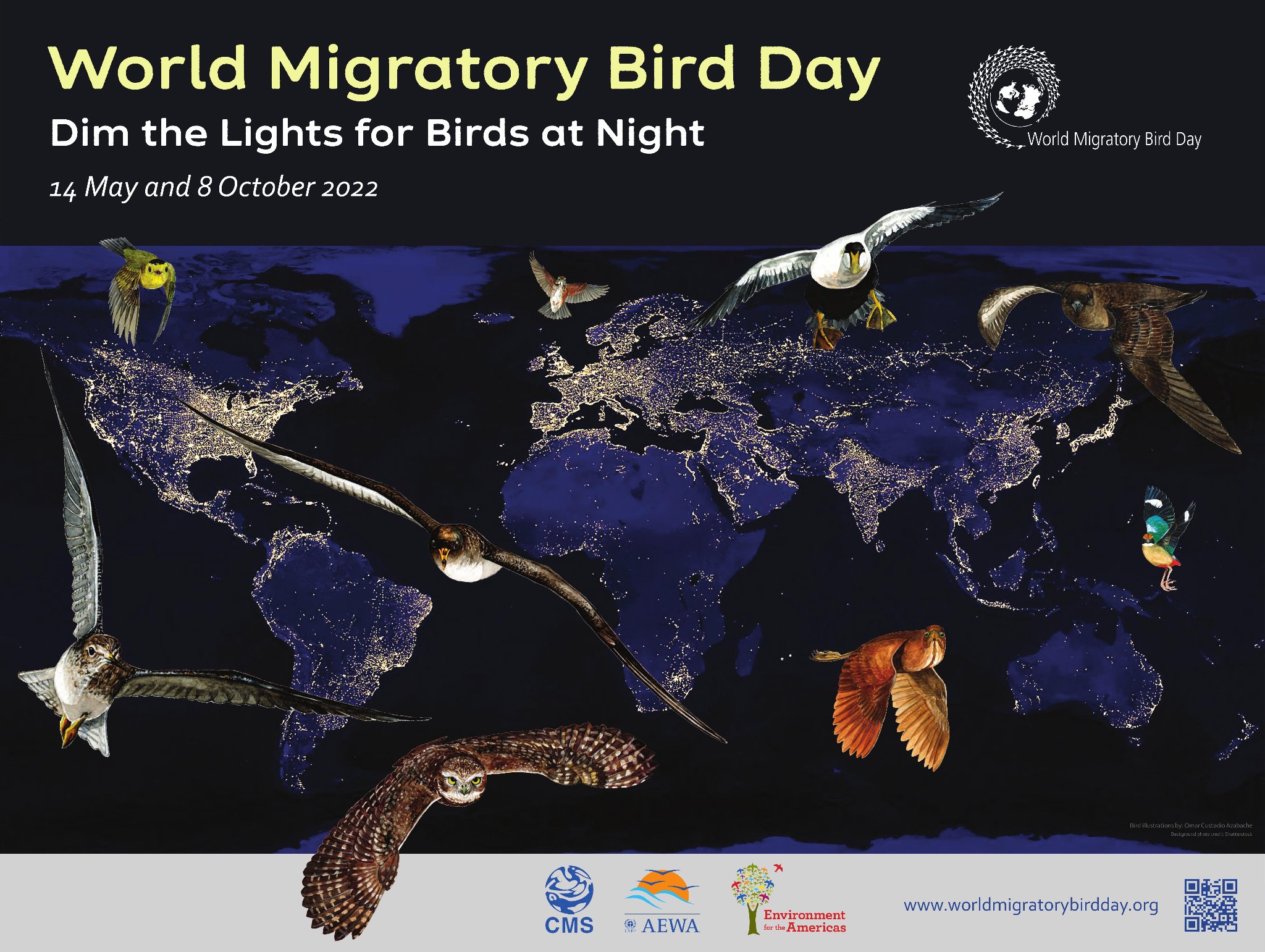
A fledgling Cory's Shearwater is grounded by street lights; photograph by Beneharo Rodríguez
Today (14 May) is the first of the year’s two World Migratory Bird Days, both with the theme of light pollution under the slogan “Dim the Lights for Birds at Night!” (in French Des nuits noires pour les vols migratoires; in Spanish; Noches oscuras, migraciones seguras).
Three ACAP-listed species are notably affected by light pollution, Spain’s Critically Endangered Balearic Puffinus mauretanicus and Chile’s Vulnerable Pink-footed Ardenna creatopus Shearwaters and New Zealand’s Endangered Westland Petrel Procellaria westlandica. The other four ACAP-listed Procellaria petrels, that come ashore and fledge from burrows at night, breed in dark sky locales (Southern Ocean islands and for the Vulnerable Black Petrel P. parkinsoni, New Zealand's Great and Little Barrier Islands. Similarly, the diurnal and so largely unaffected albatrosses and giant petrels tend to breed in areas with little light pollution.
A number of non ACAP-listed burrowing procellariiforms is affected by light pollution during breeding. These include the Vulnerable Yelkouan Puffinus yelkouan, Critically Endangered Newell's P. newelli, Endangered Hutton's P. huttoni, Least Concern Cory's Calonectris borealis, Least Concern Scopoli’s C. diomedea, Least Concern Short-tailed A. tenuirostris Shearwaters and the Endangered Hawaiian Petrel Pterodroma sandwichensis. These are the species towards which research and mitigation efforts are mostly directed, as is reported from time to time in ACAP Latest News.
Attraction of seabirds to well-lit vessels at sea appears to affect mainly the smaller, non-ACAP listed procellariiform species (storm petrels, diving petrels, prions), rather than any of the larger ACAP-listed species.

To access the World Migratory Bird Day 2022 Campaign Strategy document click here. The document provides the strategic goals and key messages for the 2022 campaign as agreed by the three main organizing partners of World Migratory Bird Day: the Convention on the Conservation of Migratory Species of Wild Animals (CMS), the African-Eurasian Migratory Waterbird Agreement (AEWA) and the non-profit organization, Environment for the Americas (EFTA).
John Cooper, ACAP Information Officer, 14 May 2022

 Español
Español  English
English  Français
Français